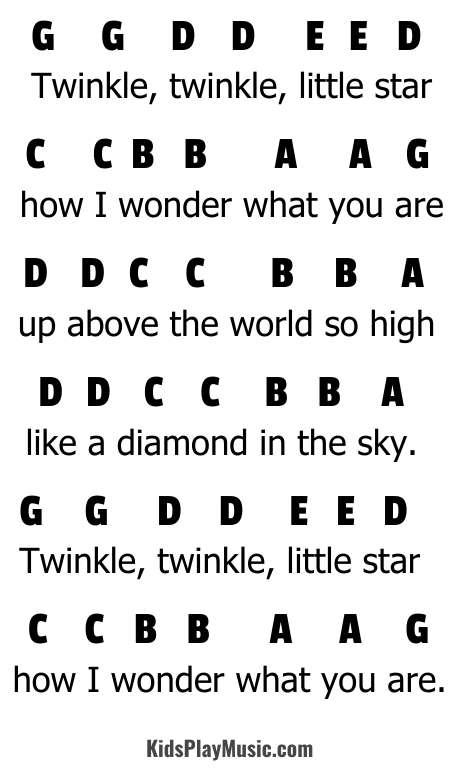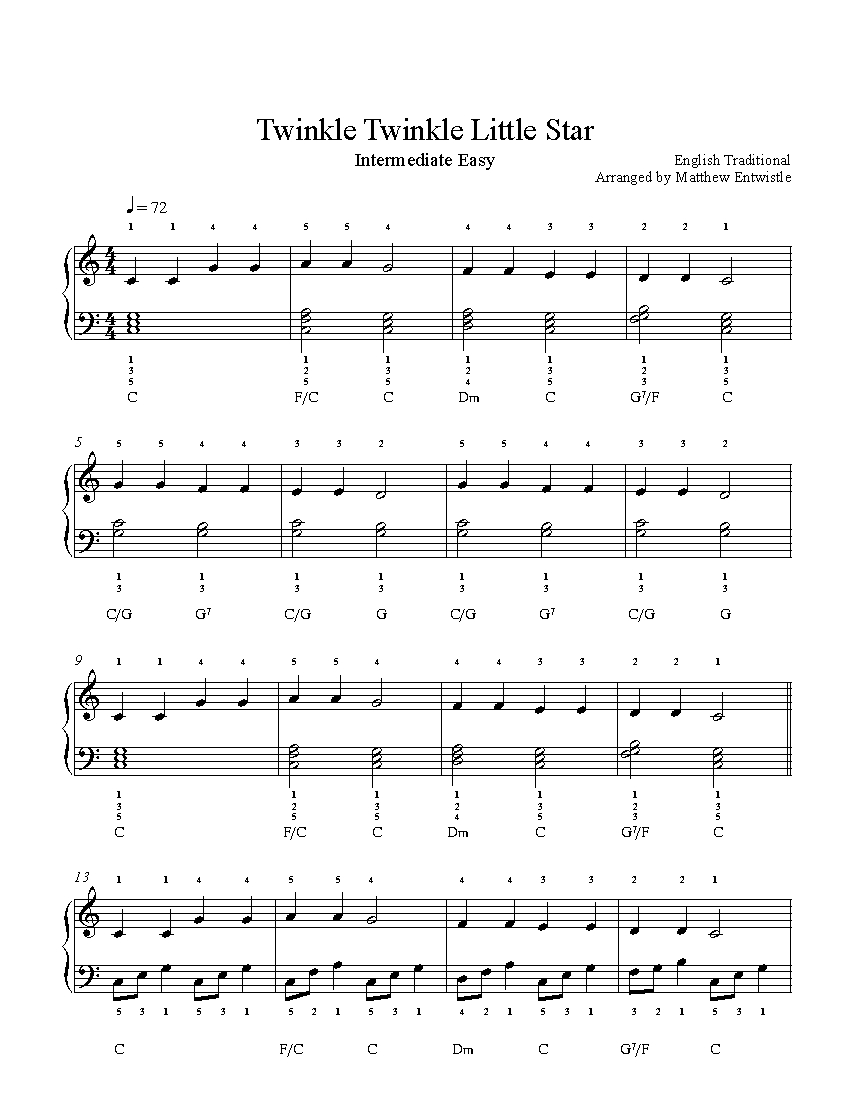The Twinkle Twinkle Little Star Piano Notes You’ve Been Looking For
Have you ever heard a melody and instantly felt a sense of comfort and familiarity? For many, “Twinkle Twinkle Little Star” is that tune. This simple yet enduring song has captivated generations, serving as a gentle introduction to the world of music. If you’re eager to learn how to play this beloved nursery rhyme on the piano, you’ve come to the right place. This article provides a comprehensive guide, delivering the exact “Twinkle Twinkle Little Star” piano notes you need, along with helpful tips and resources to get you started.
Understanding the Basics: The Building Blocks of “Twinkle Twinkle”
Before diving into the notes, it’s helpful to understand a few fundamental concepts. “Twinkle Twinkle Little Star” is a relatively easy piece for beginners due to its repetitive nature and simple melody. Key things to know:
- Key Signature: The song is typically written in the key of C major. This means that there are no sharps or flats in the key signature, simplifying the notes you need to learn.
- Time Signature: The time signature is usually 4/4, meaning there are four beats in each measure (bar).
- Note Values: Understanding note values (whole, half, quarter, eighth notes) is crucial for playing the rhythm correctly. “Twinkle Twinkle” primarily uses quarter notes, which are played for one beat.
The “Twinkle Twinkle Little Star” Piano Notes: Your Step-by-Step Guide
Here’s the sheet music, presented in a clear and easy-to-follow format:
(The following notes are based on the C Major scale. If you are unfamiliar with the C Major scale, it is recommended to learn it before attempting to play this song)
Right Hand (Melody):
- C - C - G - G - A - A - G (Twinkle, twinkle, little star)
- F - F - E - E - D - D - C (How I wonder what you are)
- G - G - F - F - E - E - D (Up above the world so high)
- G - G - F - F - E - E - D (Like a diamond in the sky)
- C - C - G - G - A - A - G (Twinkle, twinkle, little star)
- F - F - E - E - D - D - C (How I wonder what you are)
Left Hand (Simple Accompaniment - optional):
For beginners, a simple accompaniment can be to play the corresponding C, G, A, F, E, and D notes in the same octaves as the right hand, or a simple C Major chord on the first beat of each measure.
Note: The letters represent the notes on the piano keyboard: C, D, E, F, G, A, B.
Tips for Learning and Practicing “Twinkle Twinkle”
- Start Slowly: Don’t rush! Begin by practicing each hand separately at a slow tempo.
- Count Out Loud: Counting the beats (1, 2, 3, 4) while you play helps maintain rhythm.
- Use Finger Numbers: Assign finger numbers to each note (1=thumb, 2=index finger, etc.) to help with coordination.
- Practice Regularly: Even short, consistent practice sessions are more effective than infrequent long ones.
- Listen to Recordings: Listening to recordings of “Twinkle Twinkle Little Star” can help you internalize the melody and rhythm.
- Use Online Resources: Many websites and apps offer interactive piano lessons and tutorials for beginners.
Beyond the Basics: Exploring Variations and Enhancements
Once you’ve mastered the basic melody, you can explore some variations and enhancements to make the song more interesting:
- Adding Chords: Learn to play the chords of the C major scale to create a richer accompaniment.
- Experimenting with Tempo: Try playing the song at different speeds to challenge yourself and express different emotions.
- Adding Dynamics: Vary the volume (loud and soft) to add expression.
- Transposing: Practice playing the song in different keys. This helps you understand musical relationships.
Conclusion: Your Musical Journey Begins Here
Learning to play “Twinkle Twinkle Little Star” on the piano is a rewarding experience. By following the provided notes, tips, and resources, you’re well on your way to mastering this timeless melody. Embrace the learning process, be patient with yourself, and enjoy the journey of discovering the joy of music! Remember, every accomplished musician started somewhere. Your musical adventure starts now!
FAQs: Frequently Asked Questions
1. What is the easiest way to learn “Twinkle Twinkle Little Star” on the piano?
The easiest way is to start by learning the right-hand melody slowly, focusing on the correct notes and rhythm. Use finger numbers and count out loud. Then, gradually add a simple left-hand accompaniment.
2. What key is “Twinkle Twinkle Little Star” typically written in?
The song is most commonly written in the key of C major, which is considered beginner-friendly because it doesn’t involve any sharps or flats.
3. What is the time signature of “Twinkle Twinkle Little Star”?
The time signature is usually 4/4, meaning there are four beats in each measure.
4. What are some good resources for learning “Twinkle Twinkle Little Star”?
Online piano tutorial videos, interactive piano learning apps, and sheet music websites are excellent resources. Search for “Twinkle Twinkle Little Star piano tutorial” on YouTube or Google.
5. Can I play “Twinkle Twinkle Little Star” with just my right hand?
Yes, you can absolutely play the melody with your right hand! This is a great way to start and build your confidence before adding a left-hand accompaniment.




